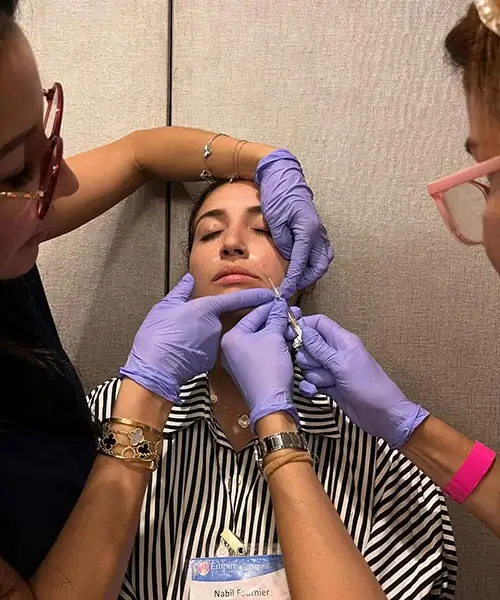Beyond the Surface: Debunking Popular Myths About Facial Fillers
By Dr. Stephen Cosentino
PRESIDENT OF EMPIRE MEDICAL TRAINING
Dermal filler injection is the second most popular minimally invasive cosmetic procedure in the United States, behind only botulinum toxin neuromodulator injection (Botox®). Millions of Americans undergo facial filler procedures each year.
Despite this, misinformation abounds. If you’re eager to restore lost volume to your face or lips but unsure whether the risk is worth the reward, we have you covered.
Common Myths About Facial Fillers — And Why They’re Wrong
These five myths about dermal filler injections are stubborn — and mostly wrong. Here’s what you need to know to sort fact from fiction and make an informed decision on cosmetic care.
Myth #1: Facial Fillers Are Dangerous
Don’t listen to anyone who downplays the side effects of facial fillers. They’re real, and in rare cases they can be serious. For example, improper injection into a blood vessel can result in life-threatening blood clots if left untreated.
But the vast majority of dermal filler treatments occur without complication and only mild, temporary side effects (if any). Compare that to traditional plastic surgery, which carries substantial risk of long-term complications and can take weeks to recover from even under ideal circumstances.
Bottom line: The risks of dermal fillers are manageable when the procedure is supervised by a board-certified practitioner with comprehensive dermal filler training.
Myth #2: Facial Fillers Don’t Last Long Enough
It’s true that dermal fillers add volume to the face (and smooth fine lines and wrinkles) only for a limited period of time.
But “limited” does a lot of work here. The shortest-acting type of filler, hyaluronic acid, produces noticeable results for 6 to 18 months. Other types of filler are even more durable, lasting two to four years or even longer in some cases.
Myth #3: Dermal Fillers and Botox Don’t Mix
Dermal fillers and Botox do mix. Well, not literally, but they’re frequently used in concert without increased risk of complications or side effects.
In fact, their effects often complement one another. Dermal fillers can add volume to specific facial features while Botox firms up small facial muscles nearby to reduce the appearance of fine lines and wrinkles.
Myth #4: If You’re Unhappy With the Results, You’re Stuck With Them
It’s better that your provider gets it right the first time, but you’re not entirely out of luck if they don’t.
The most popular type of dermal filler has an antidote called hyaluronidase, which effectively counteracts the effects of hyaluronic acid within minutes. This is useful if you experience an unsightly (though fortunately rare) complication called granulomas, which are small lumps or bumps of filler material that are visible underneath the skin. Hyaluronidase dissolves granulomas in short order, returning the skin to its former state and setting the stage for another filler injection procedure.
Myth #5: Once Filler Results Fade, You’ll Look Worse
This is only true to the extent that you’ll be a little older. But filler itself doesn’t adversely affect your underlying facial contours or accelerate the aging process.
Of course, if you’re satisfied with the results, you can always go in for another round of filler. Millions of satisfied patients do, year in and year out.


